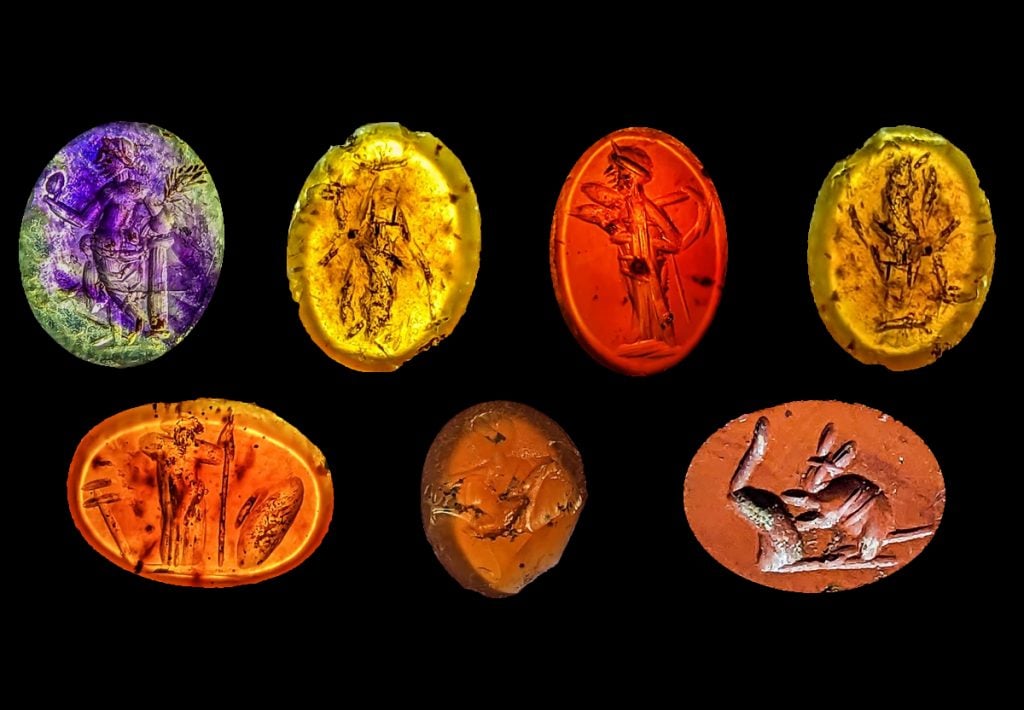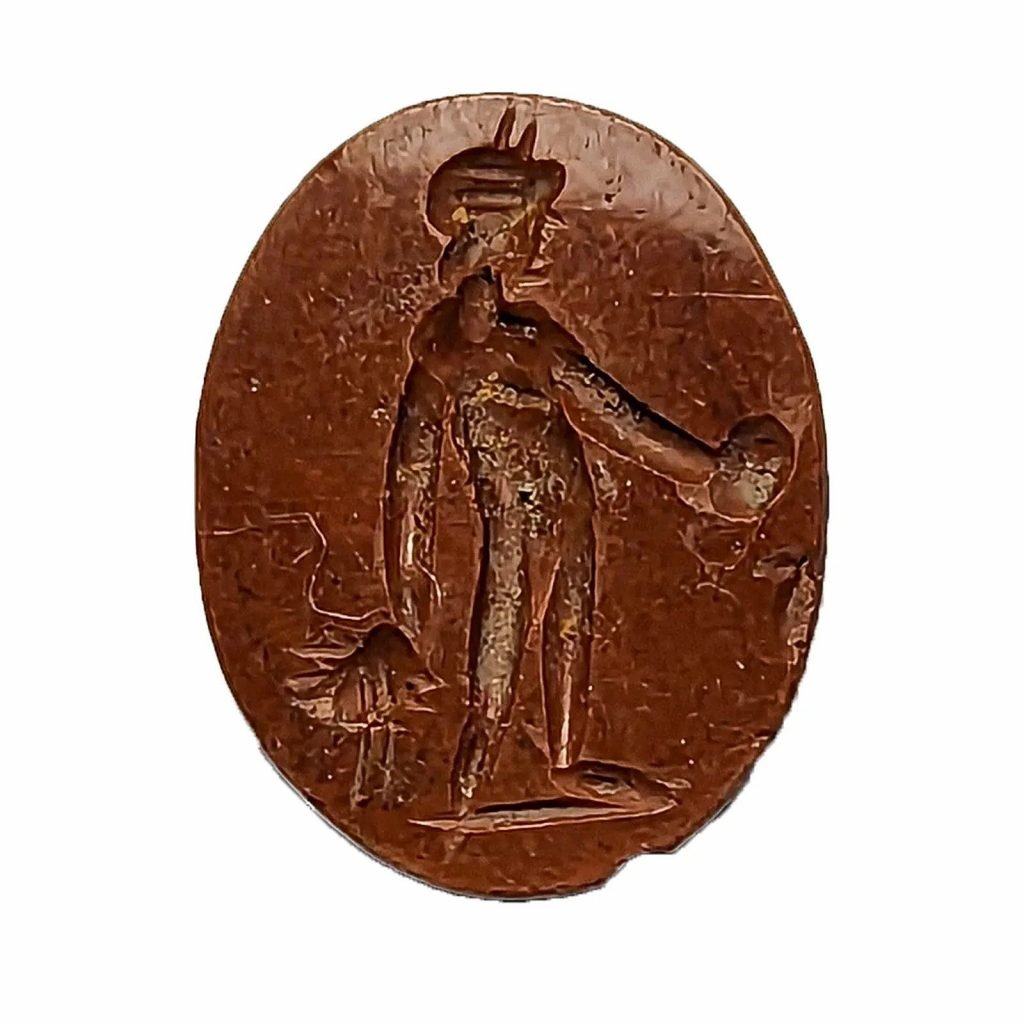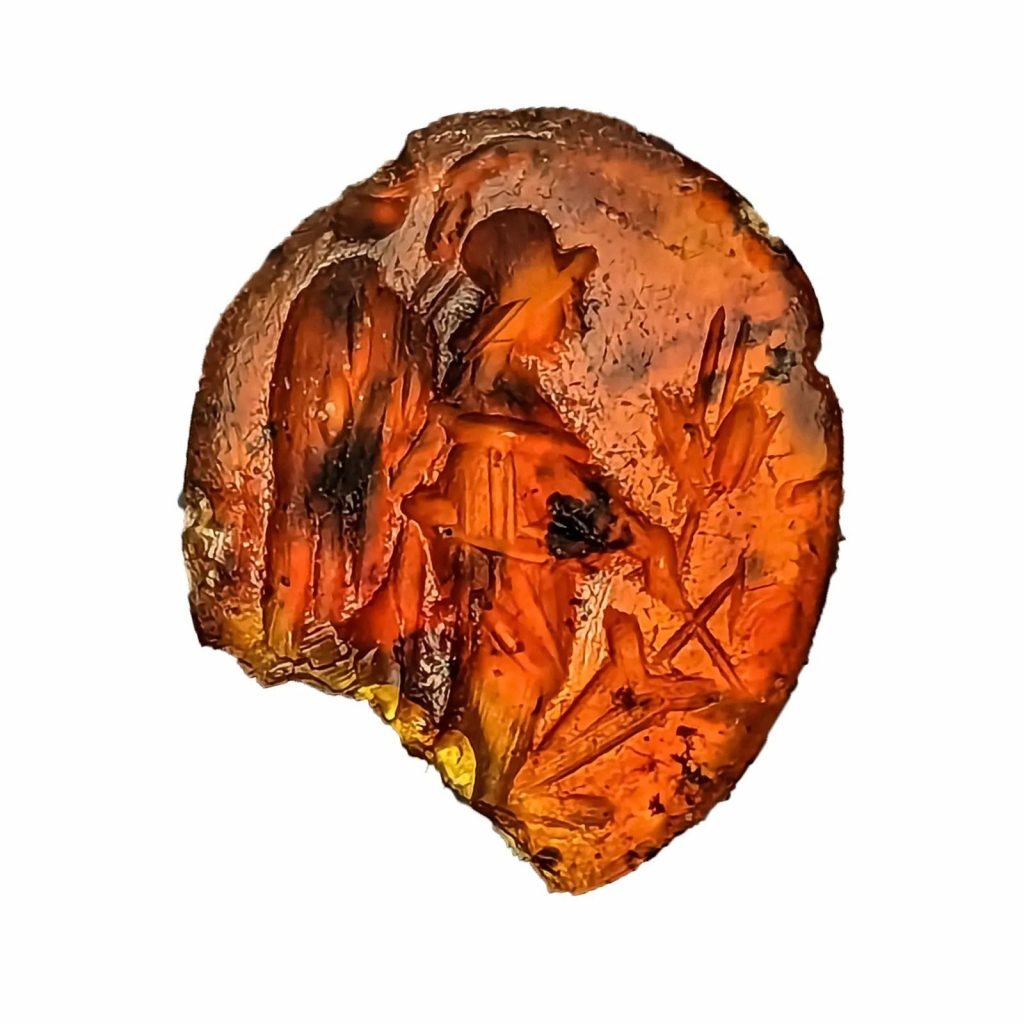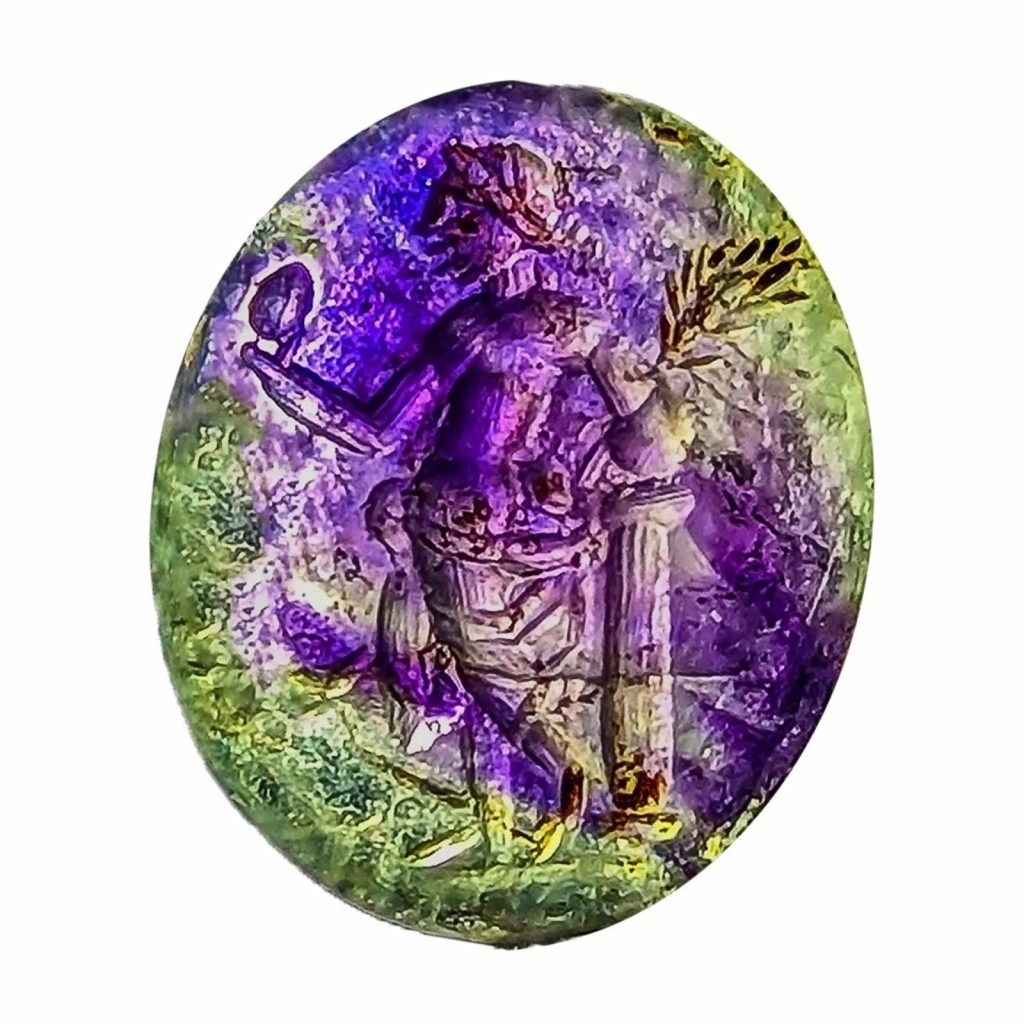Archaeology & History
Archaeologists in the U.K. Have Turned Up 34 Semi-Precious Stones in the Drain of an Ancient Roman Bathhouse
The gems were dropped by Roman bathers in the 3rd century.

The gems were dropped by Roman bathers in the 3rd century.

Min Chen

On a site on Carlisle in Cumbria, England, that once held a high-status Roman bathhouse, archaeologists have unearthed 34 gems, variously cut from amethyst, jasper, and cornelian, and dating back to the 3rd century.
Though measuring a minute five to 16 millimeters in diameter, the semi-precious stones, known as intaglios, have been engraved with intricate scenes and icons. The delicate craftsmanship, in addition to the location of their discovery, has led archaeologists to infer that the gems would have been highly valuable items that were once set into finger rings with vegetable glue.
“We believe they are lost as a result of the hot, steamy, and wet environment of a Roman bathhouse,” Frank Giecco, the technical director of engineering consultancy Wardell Armstrong who led the dig, told Arnet News. “Gems might easily become detached from signet rings, or the entire ring detached from the finger and washed down the drain.”

Red jasper intaglio showing Bonus Eventus holding two ears of wheat and a patera. Photo by Anna Giecco.
The intaglios were discovered in the drain of the Severan bathhouse, located not far from Hadrian’s Wall, which was built in 122 C.E. to fortify the northwest border of the Roman Empire. The locale, Giecco said, quite likely had an imperial or military connection.
The find bears out this link, with a number of the jewels carved with the figures of Apollo, Bonus Eventus, Mars, and other Roman deities symbolizing war and good fortune. Other intaglios bear images of Ceres, which represents fertility, Sol, the personification of the sun, and Mercury, the god of commerce.
A few gems were found alongside hairpins, which suggests that the gems probably had female rather than male owners. The distinct style of the red jasper intaglios further points to a particular jewelry workshop that supplies the zone of Hadrian’s Wall.

Cornelian intaglio showing Fortuna holding a cornucopia, with a helmet on her head worn by Minerva and the eagle wings of Victoria on her back. Photo by Anna Giecco.
These intaglios are not the first to turn up amid the ruins of Roman bathhouses. The excavation of Roman baths in Caesarea, Israel and Bath, England have led to similar discoveries, the tradition of intaglio having had roots in ancient Mesopotamia, and footprints across Greece, Persia, and Egypt.
Over the centuries, and particularly during the Renaissance, these gems spurred collecting and collectors—George Spencer, the 4th Duke of Marlborough, for one, accumulated some 780 intaglios in the 18th-century, some of which now reside in the Ashmolean Museum.

Amethyst intaglio showing Venus in profile. She holds a palm in her right hand and a flower or mirror in her outstretched left hand. The goddess leans on a column with a fluted shaft. Photo by Anna Giecco.
Besides offering an understanding of the life and times of Roman bathers, these intaglios, Giecco noted, could well be considered objects of high-quality craft.
“The intaglios can be seen on many levels,” he said, “from pieces of art to connections to the individuals who owned them.”